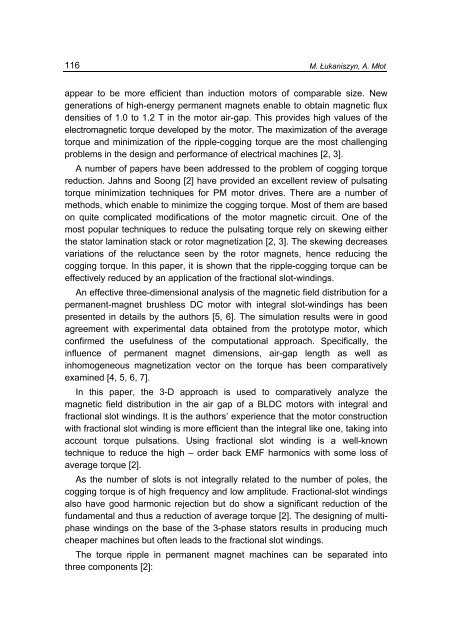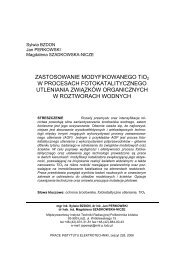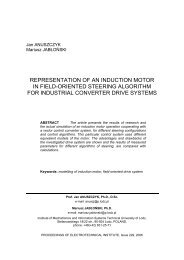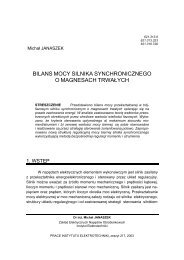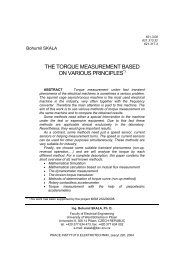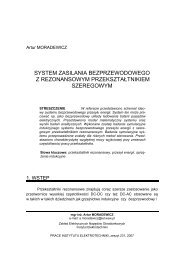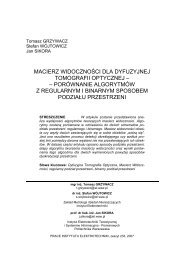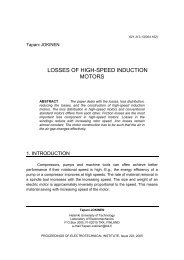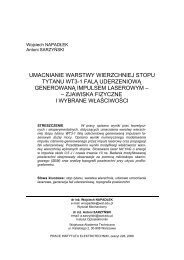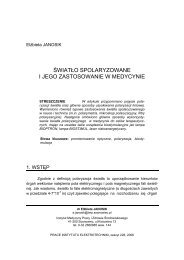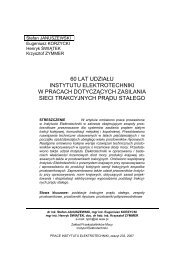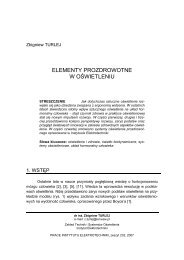ANALYSIS OF A BLDC MOTOR WITH FRACTIONAL SLOT WINDING
ANALYSIS OF A BLDC MOTOR WITH FRACTIONAL SLOT WINDING
ANALYSIS OF A BLDC MOTOR WITH FRACTIONAL SLOT WINDING
You also want an ePaper? Increase the reach of your titles
YUMPU automatically turns print PDFs into web optimized ePapers that Google loves.
116<br />
M. Łukaniszyn, A. Młot<br />
appear to be more efficient than induction motors of comparable size. New<br />
generations of high-energy permanent magnets enable to obtain magnetic flux<br />
densities of 1.0 to 1.2 T in the motor air-gap. This provides high values of the<br />
electromagnetic torque developed by the motor. The maximization of the average<br />
torque and minimization of the ripple-cogging torque are the most challenging<br />
problems in the design and performance of electrical machines [2, 3].<br />
A number of papers have been addressed to the problem of cogging torque<br />
reduction. Jahns and Soong [2] have provided an excellent review of pulsating<br />
torque minimization techniques for PM motor drives. There are a number of<br />
methods, which enable to minimize the cogging torque. Most of them are based<br />
on quite complicated modifications of the motor magnetic circuit. One of the<br />
most popular techniques to reduce the pulsating torque rely on skewing either<br />
the stator lamination stack or rotor magnetization [2, 3]. The skewing decreases<br />
variations of the reluctance seen by the rotor magnets, hence reducing the<br />
cogging torque. In this paper, it is shown that the ripple-cogging torque can be<br />
effectively reduced by an application of the fractional slot-windings.<br />
An effective three-dimensional analysis of the magnetic field distribution for a<br />
permanent-magnet brushless DC motor with integral slot-windings has been<br />
presented in details by the authors [5, 6]. The simulation results were in good<br />
agreement with experimental data obtained from the prototype motor, which<br />
confirmed the usefulness of the computational approach. Specifically, the<br />
influence of permanent magnet dimensions, air-gap length as well as<br />
inhomogeneous magnetization vector on the torque has been comparatively<br />
examined [4, 5, 6, 7].<br />
In this paper, the 3-D approach is used to comparatively analyze the<br />
magnetic field distribution in the air gap of a <strong>BLDC</strong> motors with integral and<br />
fractional slot windings. It is the authors’ experience that the motor construction<br />
with fractional slot winding is more efficient than the integral like one, taking into<br />
account torque pulsations. Using fractional slot winding is a well-known<br />
technique to reduce the high – order back EMF harmonics with some loss of<br />
average torque [2].<br />
As the number of slots is not integrally related to the number of poles, the<br />
cogging torque is of high frequency and low amplitude. Fractional-slot windings<br />
also have good harmonic rejection but do show a significant reduction of the<br />
fundamental and thus a reduction of average torque [2]. The designing of multiphase<br />
windings on the base of the 3-phase stators results in producing much<br />
cheaper machines but often leads to the fractional slot windings.<br />
The torque ripple in permanent magnet machines can be separated into<br />
three components [2]:


